Shaoqian Li
An Analytical Range-Angle Dependent Beam Focusing Model for Terahertz Linear Antenna Array
May 22, 2022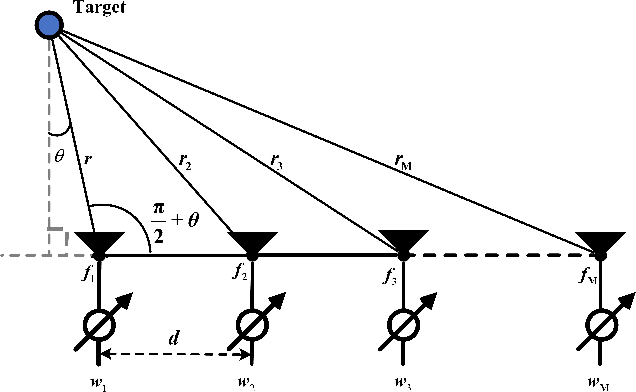
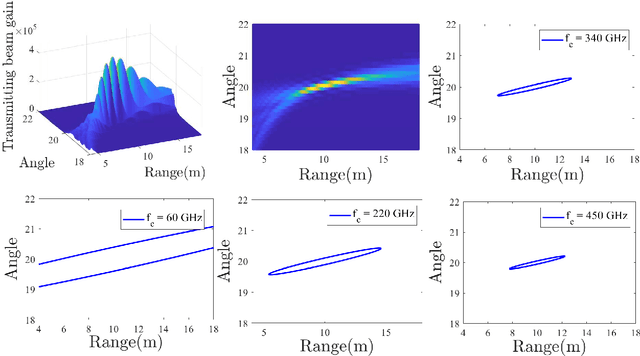
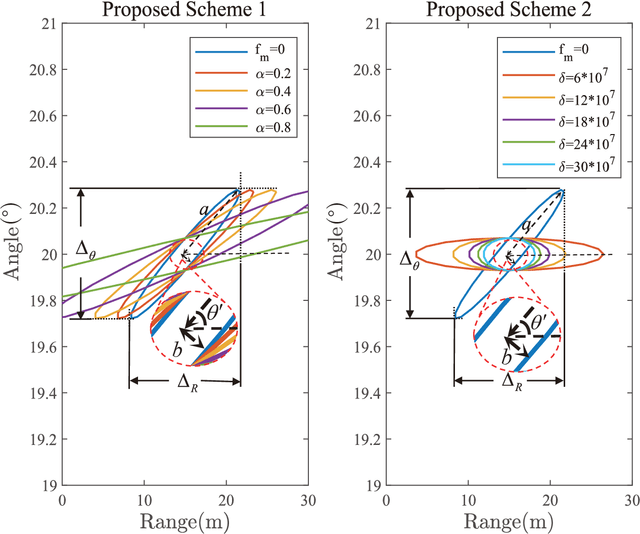
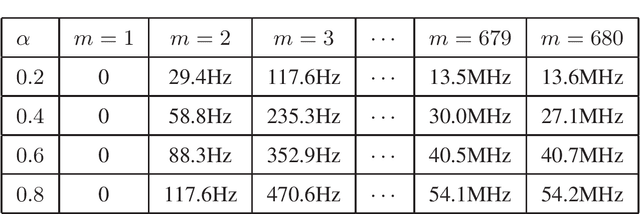
Abstract:This paper considers a scenario in which the Terahertz (THz) transmitter equipped with a linear antenna array wishes to focus its beam to a desired spatial region in the array near-field. The goal is to compute the achievable spatial region and determine how the system parameters such as the carrier frequency, the array dimension and the user's location affect its beam focusing performance. First, based on a theorem from analytic geometry, we show that the achievable focusing spatial region constitutes a rotated ellipse, with the x and y coordinates denoting the range and angle, respectively. In this way, the determination of the spatial region is reduced to a problem of deriving the coverage of an ellipse. The achievable coverage is then obtained in closed form, and the construction of carrier frequency offsets that can analytically control the beam focusing performance is provided. Numerical results validate the theoretical findings and demonstrate the performance of the proposed method.
A Unified 3D Beam Training and Tracking Procedure for Terahertz Communication
Oct 03, 2021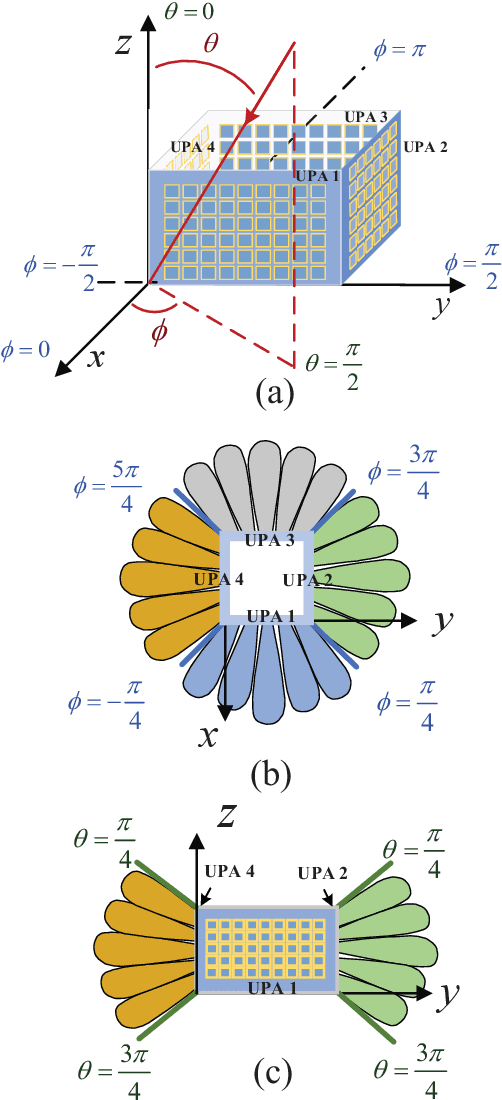
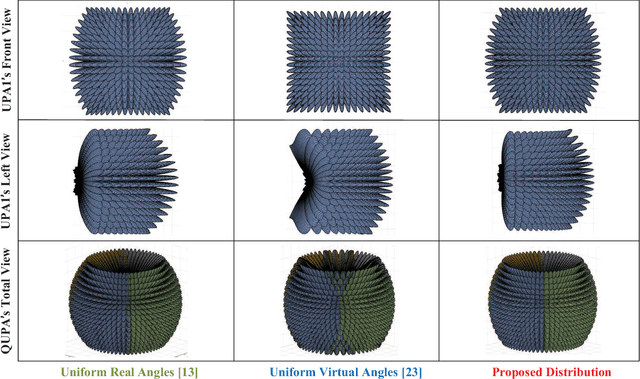


Abstract:Terahertz (THz) communication is considered as an attractive way to overcome the bandwidth bottleneck and satisfy the ever-increasing capacity demand in the future. Due to the high directivity and propagation loss of THz waves, a massive MIMO system using beamforming is envisioned as a promising technology in THz communication to realize high-gain and directional transmission. However, pilots, which are the fundamentals for many beamforming schemes, are challenging to be accurately detected in the THz band owing to the severe propagation loss. In this paper, a unified 3D beam training and tracking procedure is proposed to effectively realize the beamforming in THz communications, by considering the line-of-sight (LoS) propagation. In particular, a novel quadruple-uniform planar array (QUPA) architecture is analyzed to enlarge the signal coverage, increase the beam gain, and reduce the beam squint loss. Then, a new 3D grid-based (GB) beam training is developed with low complexity, including the design of the 3D codebook and training protocol. Finally, a simple yet effective grid-based hybrid (GBH) beam tracking is investigated to support THz beamforming in an efficient manner. The communication framework based on this procedure can dynamically trigger beam training/tracking depending on the real-time quality of service. Numerical results are presented to demonstrate the superiority of our proposed beam training and tracking over the benchmark methods.
Prospective Beamforming Technologies for Ultra-Massive MIMO in Terahertz Communications: A Tutorial
Jul 10, 2021
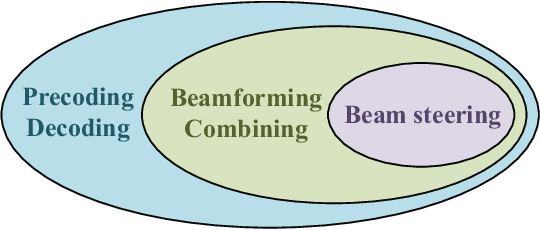
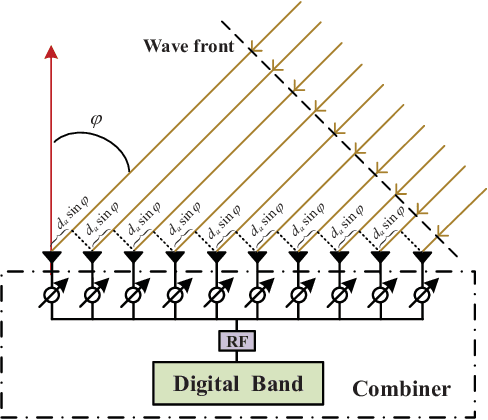
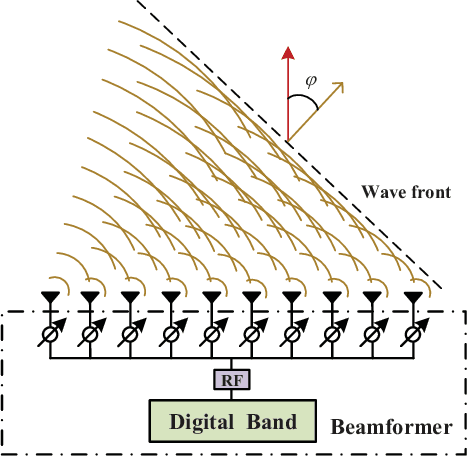
Abstract:Terahertz (THz) communications with a frequency band 0.1-10 THz are envisioned as a promising solution to the future high-speed wireless communication. Although with tens of gigahertz available bandwidth, THz signals suffer from severe free-spreading loss and molecular-absorption loss, which limit the wireless transmission distance. To compensate the propagation loss, the ultra-massive multiple-input-multiple-output (UM-MIMO) can be applied to generate a high-gain directional beam by beamforming technologies. In this paper, a tutorial on the beamforming technologies for THz UM-MIMO systems is provided. Specifically, we first present the system model of THz UM-MIMO and identify its channel parameters and architecture types. Then, we illustrate the basic principles of beamforming via UM-MIMO and introduce the schemes of beam training and beamspace MIMO for THz communications. Moreover, the spatial-wideband effect and frequency-wideband effect in the THz beamforming are discussed. The joint beamforming technologies in the intelligent-reflecting-surface (IRS)-assisted THz UM-MIMO systems are introduced. Further, we present the corresponding fabrication techniques and illuminate the emerging applications benefiting from THz beamforming. Open challenges and future research directions on THz UM-MIMO systems are finally highlighted.
Improving THz Coverage for 6G URLLC Services via Exploiting Mobile Computing
May 25, 2021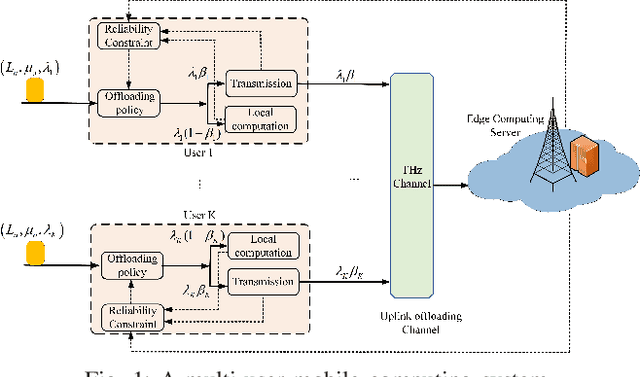
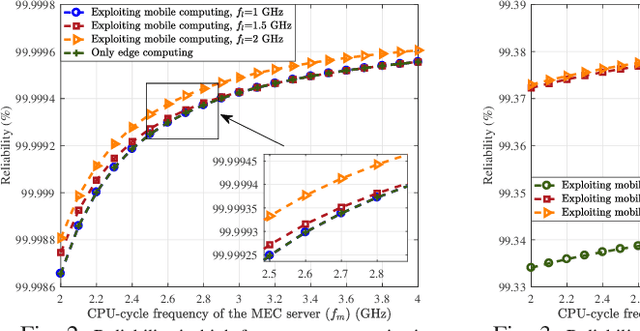


Abstract:Terahertz (THz) communication (0.1-10 THz) is regarded as a promising technology, which provides rich available bandwidth and high data rate of terahertz bit per second (Tbps). However, THz signals suffer from high path loss, which profoundly decreases the transmission distance. To improve THz coverage, we consider the aid of mobile computing. Specifically, job offloading decision in mobile computing and frequency allocation in communication are co-designed to maximize distance and concurrently support ultra-reliable low-latency communications (URLLC) services for the sixth-generation (6G) mobile communication. Further, the above optimization problem is non-convex, then an effective and low-complexity method is proposed via exploiting the special structure of this problem. Finally, numerical results verify the effectiveness of our work.
 Add to Chrome
Add to Chrome Add to Firefox
Add to Firefox Add to Edge
Add to Edge